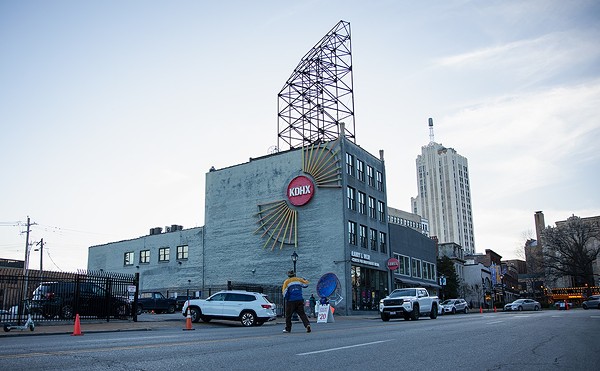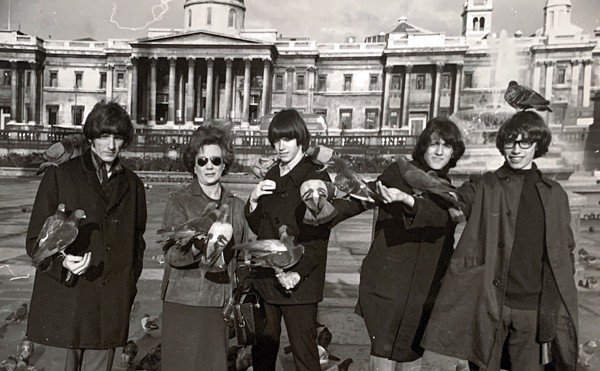But as a result of the strained relations between the U.S. and Cuban governments, getting to Cuba to hear this music in person can take some doing. There's always the illegal route — heading to Cuba through Mexico or Canada without obtaining official permission from the U.S. Department of the Treasury's Office of Foreign Assets Control. OFAC issues official travel licenses for a variety of reasons, ranging from professional research and educational purposes to religious activities.
But there is a way to travel to Cuba officially and also get closer to the heart of Cuban music and dance than you may have believed possible. And that route leads right through St. Louis and a company called Caribbean Music and Dance Programs (CMDP). The company is owned and operated by Thor Anderson and Jane Bowling-Anderson, with the support of a small group of dedicated employees.
CMDP offers several trips a year to Cuba, and the focus is on two-week immersions into various styles of Cuban music and dance — workshops that provide instruction in topics such as rumba, contemporary percussion and Afro-Cuban folkloric dance and music. There's even a cross-country tour that takes participants outside Havana to cities such as Santiago, Trinidad and Guantanamo that rarely see tourists — especially Americans.
Jane, three days removed from a seven-week visit to Cuba in which she oversaw three different workshops, offers me a cup of strong Cuban coffee cut with milk and sugar as we talk on the deck of her West County home — the current location of the CMDP office. Inside, several people sit at an array of computers, faxes and phones, making reservations for upcoming workshops and overseeing arrangements for two workshops that have just begun in Brazil.
During our conversation, we're joined at various times by Thor, taking a break from his 9-to-5 job in health-services management; their son, Curtis, who handles marketing for the company; and Curtis Lanoue, a part-time employee who played a pivotal early role in the Andersons' involvement with CMDP.
"Jane and I went to a Latin dance at the Casa Loma back in '94, and we met Curtis through a mutual friend," explains Thor Anderson. "He told us about this place in San Francisco that did tours of Cuba with dance and music workshops. I'd been playing percussion since high school, and at that time I was playing with the Sambistas (a St. Louis group that explores Latin American and South American percussion traditions) and was very interested in Latin percussion. And Jane has a strong background in dance, so we decided to send for a brochure ourselves."
For their 1995 vacation, the Andersons had planned a bicycling trip in Germany, but when Thor sustained an injury they began exploring alternatives. Eventually they turned up the CMDP brochure.
"One thing led to another, and I decided I really wanted to go," recalls Thor. "Jane had some serious reservations about Cuba, but she didn't want me going alone and eventually decided to go."
That first trip to an Afro-Cuban folkloric music and dance workshop soon turned into an annual event for the Andersons. "We had a wonderful time," says Jane. "It was a great experience, and there was no question that we wanted to go again — and again." They shifted their trips to February and participation in a workshop on popular music and dance, and the results soon paid off back in St. Louis for Thor.
"I really wanted to play with El Caribe Tropical, because they were the best Latin band in St. Louis," he explains. "And once I had the chance to learn Latin rhythms from Cuban masters on that first workshop, I was finally able to start working with El Caribe as a substitute that fall. Eventually, I ended up being the conguero player with the band, and I'm still playing with them."
The Andersons moved from the role of avid participants in CMDP workshops to ownership of the company in 1998, when the original owners — four women who happened to meet at a dance workshop in Cuba in the late 1980s — decided it was time to sell the company.
"When they decided to sell, they sent out a prospectus," says Thor. "At first we just thought we'd be passive investors, helping keep the company going. But it turned out there weren't many offers, so we concluded we were going to have to take a chance and buy it ourselves." "It turned out to be the best thing we've ever done," adds Jane.
The Andersons officially became the owners of CMDP in February 1998, and the office moved to St. Louis in May. The original owners helped them through a transition period during the 1998 workshops, but this year the Andersons are running things on their own.
Dealing with the combination of U.S. travel sanctions and the often baffling whims of Cuban bureaucracy can be a challenge, but the Andersons have built a solid string of contacts that have made the process go more smoothly as time has passed. Take the transportation issue, for example: "Arranging transportation to and from Cuba, as well as in the country, can be an adventure," says Jane. "We fly into Cuba from Cancun, and we used to use Air Cubana, but we've switched to Air Mexicana now because they're more professional. It costs more, but you get what you pay for. And this year we've managed to improve our bus service in Cuba as well."
The concept of daily music-and-dance workshops may deter some potential travelers who feel they don't have the skills to participate. But according to the Andersons, although professional musicians and dancers continue to be the core participants, the definition of "professional" stretches over considerable territory.
"Some people who come know they're amateurs in terms of their music or dance talent, but they're enthusiastic about participating and learning," says Thor. "So when the workshops first start, everyone goes through an audition, and then the instructors divide them up according to talent level. So even if you're not very skilled, you can still enjoy and learn."
The workshop concept allows CMDP to bring Americans into Cuba legally, but as the barriers between the U.S. and Cuba continue to fall, the Andersons are preparing to offer tours that focus on the enjoyment of all aspects of Cuban culture — without the workshop premise.
"I think workshops will continue to be our core business," Thor explains, but we're also registering a new brand, something that we're calling Planet Cuba. It's a way to offer a tour that shifts the balance from an intensive workshop to a vacation experience that still immerses you in the Cuban culture — adding art, architecture, history and other cultural elements to music and dance."
The Andersons also see the Planet Cuba concept as a way to get people who do make the journey to Cuba out of Havana and to relatively unknown but fascinating cities such as Trinidad and Santiago.
"Havana was visited by about 80,000 Americans last year," notes Curtis Anderson, "and almost all of them didn't get outside Havana." Thor adds, "Havana's becoming what's called a "mature' tourist destination. And although I certainly wouldn't compare Havana to a typical tourist city — the people continue to be very friendly and have great pride in their culture — big tourism is a cynical business, and eventually it changes the nature of a city. Outside Havana you find cities and people who think seeing a tourist is very unusual."
"And going to places like Trinidad, which is 480 years old and is still very much intact and unchanged, is like walking into a time bubble," says Jane. "It's one of the most beautiful cities I've ever seen, and there are places like that throughout Cuba. When people come back, they tend to become mini- ambassadors for Cuban culture."
For more information about Caribbean Music and Dance Programs, check out the company's Web site at www.caribmusic.com or call, toll-free, 877-665-4321.





